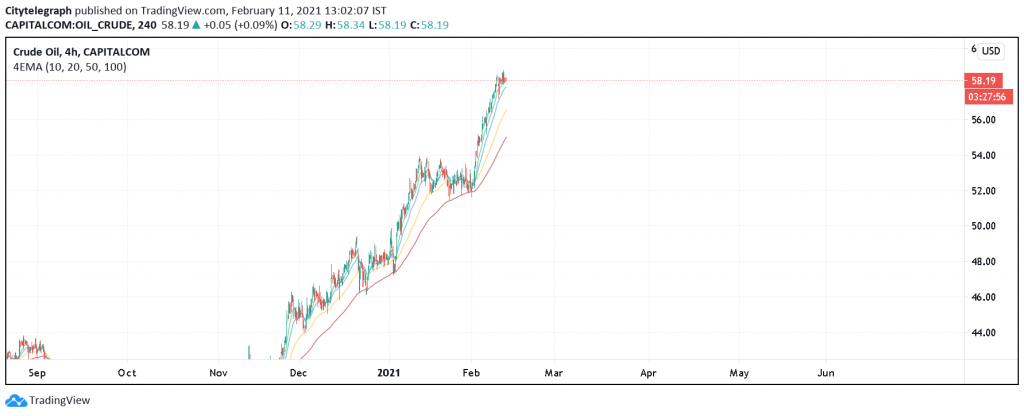The price of oil (April Brent futures) on Wednesday, February 10 to 15.37 GMT + 3 increased by 0.5% to $61.5 per barrel of Brent. At the same time, the price again renewed its maximum since January last year, rising to $ 61.61.


The “black gold” market is playing out the data on the dynamics of oil reserves in the US last week. Thus, the American Petroleum Institute (API) recorded a drop in the indicator by 3.5 million barrels.
The US Department of Energy will present its estimates on Wednesday evening. They may show a decline for the third week in a row, with US stocks already dipping to March 2020 levels. However, experts predict an increase in US oil reserves – by about 1 million barrels last week. Norwegian oil and gas group Equinor (formerly Statoil) posted a net loss of $ 5.496 billion in 2020 against aprofit a year earlier. On a per common share basis, the diluted loss was $ 1.69 against a profit of $ 0.55.
Equinor’s revenue declined 29% year-over-year to $ 45.818 billion.
In the fourth quarter of 2020, Equinor’s net loss jumped more than 10x year on year to $ 2.416 billion. On a per share basis, the diluted loss was $ 0.75 versus a loss of $ 0.07 a year earlier. The company’s quarterly revenue fell 23% to $ 11.746 billion.
Equinor’s hydrocarbon production in the fourth quarter amounted to 2.043 million barrels of oil equivalent per day, down 7% from a year earlier. In general, in 2020, it was equal to 2.07 million barrels of oil equivalent per day.
Against the background of such news, it is quite natural that the Equinor group sells assets in the American Bakken field for $ 900 million in the states of North Dakota and Montana to Grayson Mill Energy. In the fourth quarter of 2020, the permitted production from these fields was 48 thousand barrels of oil equivalent per day (excluding royalties)

